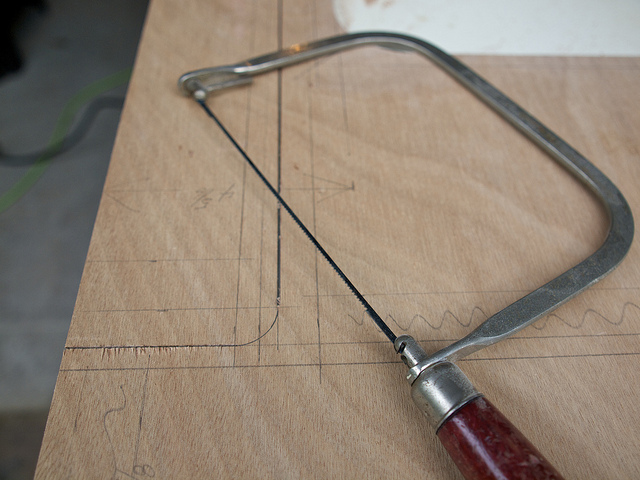Safety Tips to Follow When Using a Coping Saw

A coping saw, as shown in the photo above, is a small handheld saw that's used to cut materials like wood and plastic. Some people assume there's little-to-no risk of injury when using a coping saw, simply because it doesn't use any type of electrical power mechanism. While it's true that coping saws are completely manual, they can still cause serious injuries in the form of lacerations or even finger amputations. So before using one, check out the following safety tips to reduce the risk of injury.
Protective Eyewear
According to the Centers for Disease Control and Prevention (CDC), roughly 2,000 workers sustain an eye injury that merits professional medical attention every day in the United States. Using a coping saw without protective eyewear only increases the risk of such injury. This is why it's best to err on the side of caution by wearing impact-resistant eyewear. It's a small price to pay for protecting your eyes from serious injury.
Inspect for Damage
It's also a good idea to get into the habit of inspecting your coping saw for damage before each use. Take a few minutes to look at the screws and fittings, checking to make sure it's not loose or otherwise damaged. A single loose screw, for instance, may cause the blade to slip out of place, which can subsequently cause injury by slicing into your hand. If your coping saw is damaged, refrain from using it until it has been fixed.
Materials Being Cut
Coping saws aren't designed to cut through all materials. Rather, they are intended for use on light, thin materials of 1 inch thickness or less. Attempting to cut through materials thicken than 1 inch increases the risk of injury, as the blade may slip.
Wear Gloves
You can further reduce your risk of injury when using a coping saw by wearing gloves. A pair of heavy-duty gloves will reduce the risk of splinters and lacerations.
Replace the Blade
While you can't necessarily sharpen a coping saw's blade, you can still replace it -- and you should replace it when it becomes dull. Over time, the blade will lose its sharpness, forcing you to push with greater force to cut into materials. Contrary to popular belief, cutting with a dull blade actually increases the risk of injury. So, if your coping saw has a dull blade, replace it ASAP to avoid injury.
Photo credit: Dale Simonson
Recent Posts
-
Fire Safety in the Workplace: What You Need to Know
What steps are you taking to prevent fires in your workplace? According to the U.S. Occupational Saf …Aug 23rd 2023 -
Is It Safe to Go Jogging With a Cold Infection?
If you're suffering from a cold infection, you might be wondering whether it's safe to go jogging. T …Aug 22nd 2023 -
5 Safety Tips to Follow When Using a Powder-Actuated Tool
Powder-actuated tools are commonly used to join materials to steel and concrete. Also known as Hilti …Aug 20th 2023



